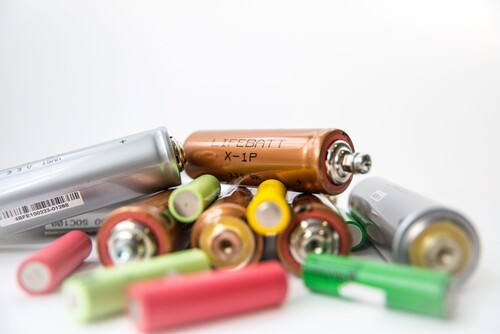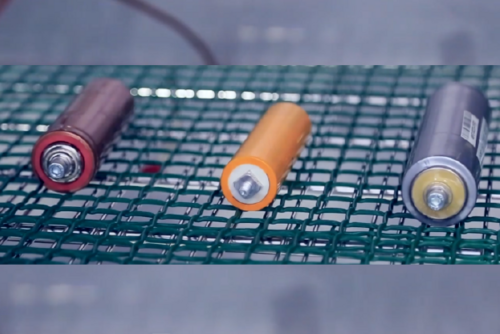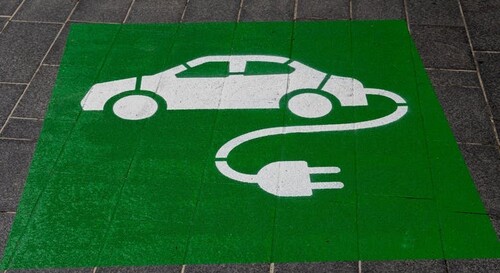Access the Recherche DATA Gouv repository
Optimising and extending the life of lithium-ion batteries
Eduardo Redondo-Iglesias and Marwan Hassini, LICIT-ECO7 laboratory, Université Gustave Eiffel
In the LICIT-ECO7 laboratory, two researchers are drawing up “profiles” of lithium-ion batteries and assess their performance using characterisation and ageing tests. Their data, which is made open, aims to promote the use of batteries for as long as possible.
Their research is key to reducing one of the major sources of greenhouse gas emissions linked to transport: lithium-ion batteries. These are used to power electric and hybrid cars but have serious environmental impacts. The extraction and refining of the minerals needed to produce them require a lot of water and energy,1 which generates greenhouse gases and severe air, water and soil pollution.2
Promoting the correct use and recycling of lithium-ion batteries
“We’ll never be able to reduce the environmental impact of battery production, but we can reduce the ecological debt by facilitating their longest possible use” says Marwan Hassini, a PhD student in electrical engineering at the UMR LICIT-ECO7 (Université Gustave Eiffel / ENTPE) and AMPERE laboratory (UMR Lyon 1 University, École Centrale de Lyon and INSA Lyon). How? By encouraging sustainable use (slow charging, avoiding extreme demands on the battery) and reuse. “After serving an initial purpose in an electric car, batteries can be reused for a range of applications including mobile charging stations, renewable energy storage networks and emergency power supplies.”

Data to improve our understanding of batteries and changes in their performance
To encourage battery reuse, we need to learn more about the characteristics of the many batteries on the market today and analyse how their performance changes over time and with different uses. These are the questions addressed by Marwan Hassini and his thesis supervisor, Eduardo Redondo-Iglesias, a research engineer in electrical engineering at LICIT-ECO7. Based on a study of batteries made by Samsung and A123 Systems, the researchers produced data sets that characterise the first and second lives of batteries. “Characterisation tests allow us to determine whether a second life is possible and, if so, for what,” explains Marwan Hassini. “Characterisation includes ampere-hour, impedance and open-circuit voltage measurements,” adds Eduardo Redondo-Iglesias. “It allows us to map the characteristics - current, resistance, power, etc. - and behaviour of a battery, as well as its variability depending on the environment or use. This data can also be used to create virtual batteries, which are digital models used to optimise energy consumption in a vehicle, for example”.
Characterisation is required for battery ageing tests, which provide valuable data for identifying the most damaging factors of battery use and developing ageing models according to conditions of use, such as charging speed, temperature and period of use. While this data is of interest to economic stakeholders, it is time-consuming and costly to obtain. “An ageing test takes between 2 and 6 months and is resource intensive”, explains Eduardo Redondo-Iglesias. “That’s why we’re collaborating with other laboratories to pool tests within projects such as SIMSTOCK, SIMCAL, MOBICUS and, more recently, the COMUTES2 consortium”. The researchers are committed to an open science approach and have also developed free software to facilitate the use of their data: DATTES and VEHLIB.
Glossary
Lithium-ion battery: lithium-ion batteries are electrochemical energy accumulators that use the principle of the reversible exchange of lithium ions between two electrodes to store and produce electricity.
Lithium-ion batteries are used in electric cars because of their performance, particularly in terms of energy and power density.
Impedance: electrical impedance is a complex quantity (real part, imaginary part) that describes the opposition to current flow in an electrical circuit.
1 It takes over 400 kWh to produce 1 kWh of lithium-ion battery. Source: Larcher, D. ; Tarascon, J.M. Towards greener and more sustainable batteries for electrical energy storage. Nat. Chem. 2015, 7, 19–29. doi : 10.1038/nchem.2085.
2 Sources: Electric vehicles from life cycle and circular economy perspectives – European Environment Agency Report No 13/2018; Rapport d'étude Controverses minières · Volet 1 - Caractère prédateur et dangereux · Techniques minières · Déversements volontaires en milieux aquatiques · Anciens sites miniers - Association SystExt
Interview carried out by Kogito.
Identity card of dataset
Characterisation data set for lithium-ion batteries in their first life cycle | |
| Data access: | https://entrepot.recherche.data.gouv.fr/dataverse/battery_data |
| License: | Etalab Open License 2.0 |
| Production: | 2023 |
| Citations: | REDONDO-IGLESIAS, Eduardo; TIAN, Bei, 2023, "Characterisation tests of A123 4.4Ah cell", https://doi.org/10.57745/XIDTZH, Recherche Data Gouv, V1 REDONDO-IGLESIAS, Eduardo; SOTTILE, Simone; HASSINI, Marwan, 2023, "Characterisation tests on Samsung 18650 26J cells", https://doi.org/10.57745/R9Y6UR, Recherche Data Gouv, V1 REDONDO-IGLESIAS, Eduardo; DUFOUR, Clément; TIAN, Bei, 2023, "Efficiency tests on A123 4.4Ah cells", https://doi.org/10.57745/YNYCGN, Recherche Data Gouv, V1 |
| Contact: | Eduardo Redondo-Iglesias |
| Key words: | lithium-ion, battery, electric vehicles, characterisation tests |
Characterisation data sets for second-life lithium-ion batteries | |
| Data access: | https://data.univ-gustave-eiffel.fr/dataverse/second_life_batteries |
| License: | Etalab Open License 2.0 |
| Production: | 2022 |
| Citations: | HASSINI, Marwan; REDONDO-IGLESIAS, Eduardo; VENET, Pascal; GILLET, Sylvain; ZITOUNI, Younes, 2022, "Characterization test over second life high capacity lithium-ion cells", https://doi.org/10.25578/DQBXO5, data.univ-gustave-eiffel, V3 |
| Contact: | Marwan Hassini |
| Key words: | lithium-ion, battery, electric vehicles, characterisation tests, reuse, second life |
Data sets on the ageing of lithium-ion batteries | |
| Data access: | https://entrepot.recherche.data.gouv.fr/dataverse/battery_data |
| License: | Etalab Open License 2.0 |
| Production: | 2024 |
| Citations: | REDONDO-IGLESIAS, Eduardo; VENET, Pascal; PELISSIER, Serge, 2024, "Aging tests on Kokam SLPB 283452H cells", https://doi.org/10.57745/JJIDWS, Recherche Data Gouv, V1 |
| Contact: | Eduardo Redondo-Iglesias |
| Key words: | lithium-ion, battery, ageing test, capacity, impedance, electric characteristic, calendar ageing, cyclic ageing |


![[Translate to English:] Licence creative commons BY-SA 4.0 [Translate to English:] Licence creative commons BY-SA 4.0](https://reflexscience.univ-gustave-eiffel.fr/fileadmin/ReflexScience/Accueil/Logos/CCbySA.png)